How to recreate the iconic Nancy Meyers aesthetic in your home – 8 rooms that exude the movie's charm and comfort
Cozy, comforting, and filled with charm, the interiors of Nancy Meyer's iconic films have got a cult following. We asked designers who love the look how to recreate it
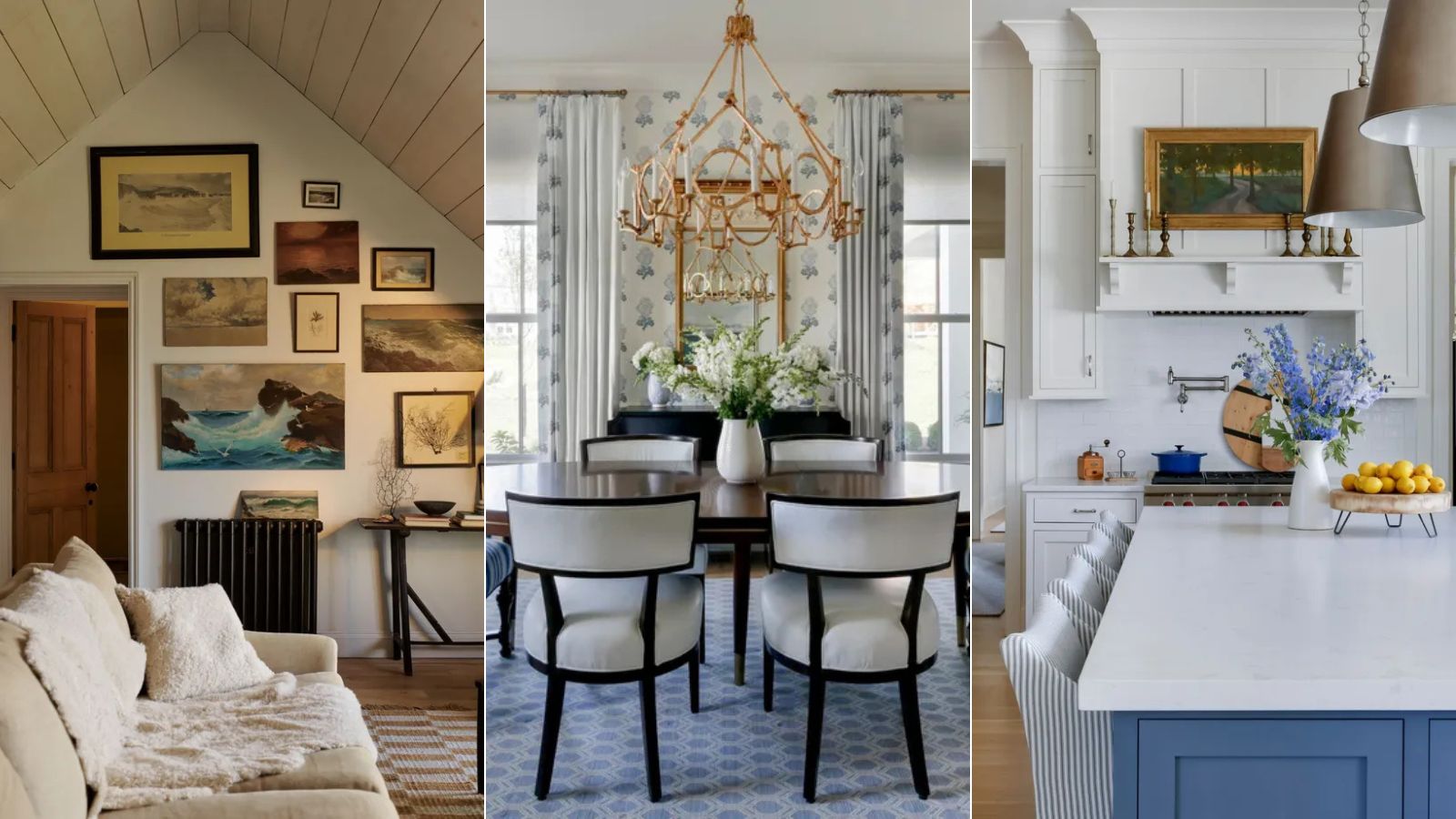
- 1. Create characterful spaces that feel sociable
- 2. Balance rustic style with a little luxury
- 3. Mix new with old for a timeless transitional boho style
- 4. Design a home that feels like you
- 5. Trust in classic color combinations
- 6. Layer up textures for plenty of depth
- 7. Ground light colors with darker woods
- 8. Blend touches of traditional

Nancy Meyers movies, are my comfort movies, along with the rest of the world, I am sure. I watch The Holiday and long to be swanning around Cameron Diaz's luxurious LA Home, or snuggled up in Kate Winslet's cozy cottage, depending on my mood. The Parent Trap has been a favorite film since I was a child and one thing I always note, no matter how long I leave it between re-watches, is that it never dates – the outfits and the interiors are timeless.
I love her films because there are no sharp edges, no mean villains, no shocking endings, they are just gloriously easy-to-watch, heartwarming films. And the interiors that surround her much-loved characters reflect this too. They are about comfort. The Nancy Meyers aesthetic, which has seeped into both the fashion world and the world of interiors is all about softness, warm colors, subtle patterns, and rooms that make you just want to curl up with a book (as most of her characters do at some point) and indulge in the coziness of it all.
And although the love for the Nancy Meyers aesthetic has been going strong for decades, it's getting even more attention in 2024 as it's so in line with so many interior design trends we have seen this year. Rustic beach house vibes, classic Hamptons style, a touch of the luxurious California casual trend that's been everywhere, plus, a timeless transitional look that we are all obsessed with recreating.
As a designer, Shelley Cekirge explains, 'Nancy Meyers is known for her warm, inviting, home-y interiors that always feel clean but never feel sterile. She achieves the perfect balance of comfort and elegance and always creates the illusion that a space is fully lived in but also well taken care of.'
What are the key elements of the Nancy Meyers aesthetic?
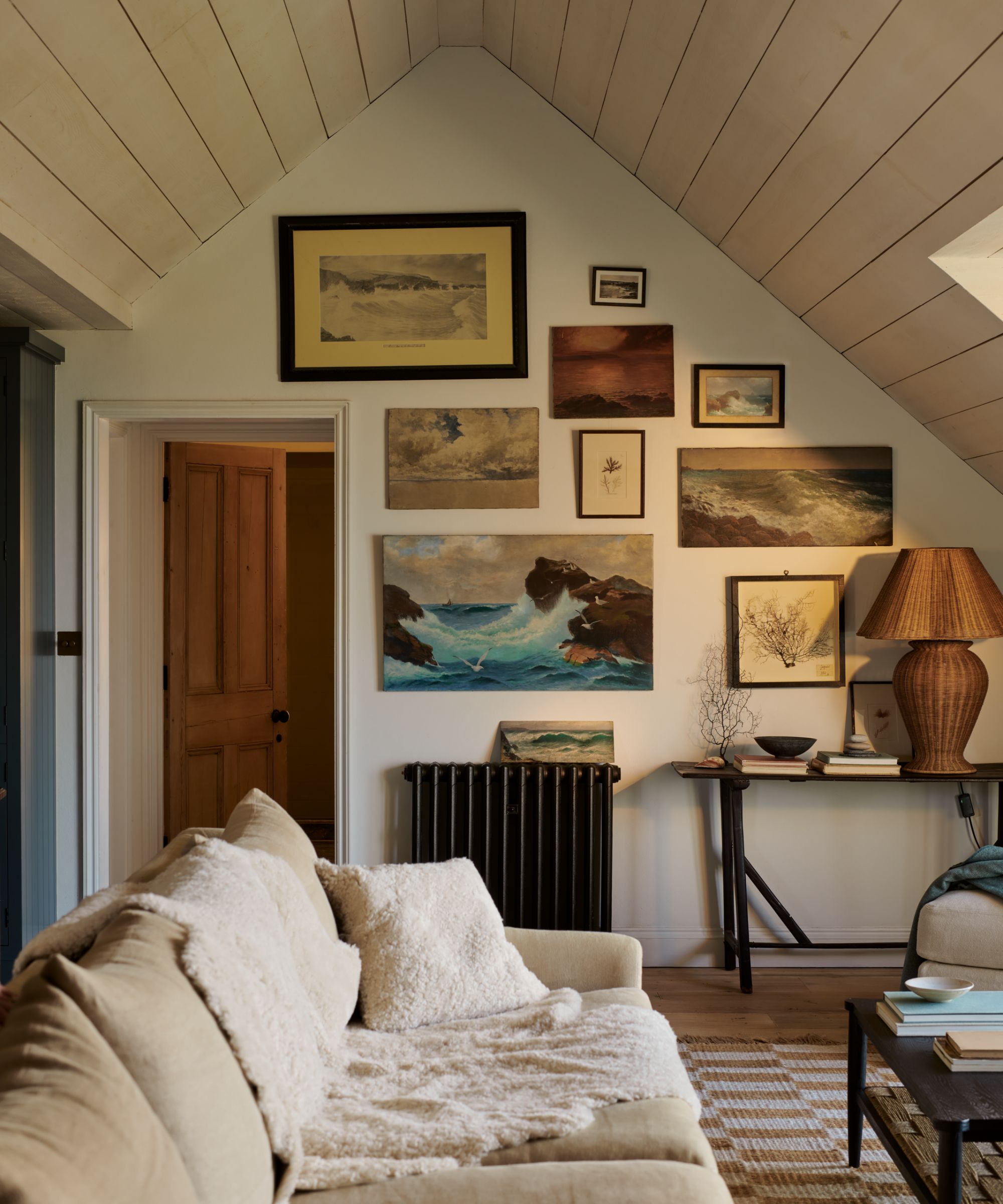
1. Layers: Cozy and welcoming is core to the Nancy Meyers' aesthetic. No matter what the overall style of the room, whether it's a light and bright kitchen or a cozy cottage living room, you will find layers. Layers of tonal colors, layers of patterns, layers of fabrics.
2. Low lighting: there's no sign of the big light in a Nancy Meyers home. Soft, layered (there's that word again) lighting that pools over sofas and dining tables is how it's done.
3. Characterful pieces: Antiques and vintage pieces can always be found on a Nancy Meyers' set. It is really quite a traditional aesthetic, and yet they never date or feel overly fussy.
4. Darker woods: A lot of the wooden accents in Nancy Meyers' homes is dark and warm which creates a nice contrast to all the soft colors and textures.
5. Tasteful patterns: You'll always find pattern, and often more than one going on in the same room. Florals, chinoiserie, stripes – a lot of traditional motifs in keeing with the heritage style of so many of her sets.
8 tips on how to recreate the Nancy Meyers look in you home
1. Create characterful spaces that feel sociable
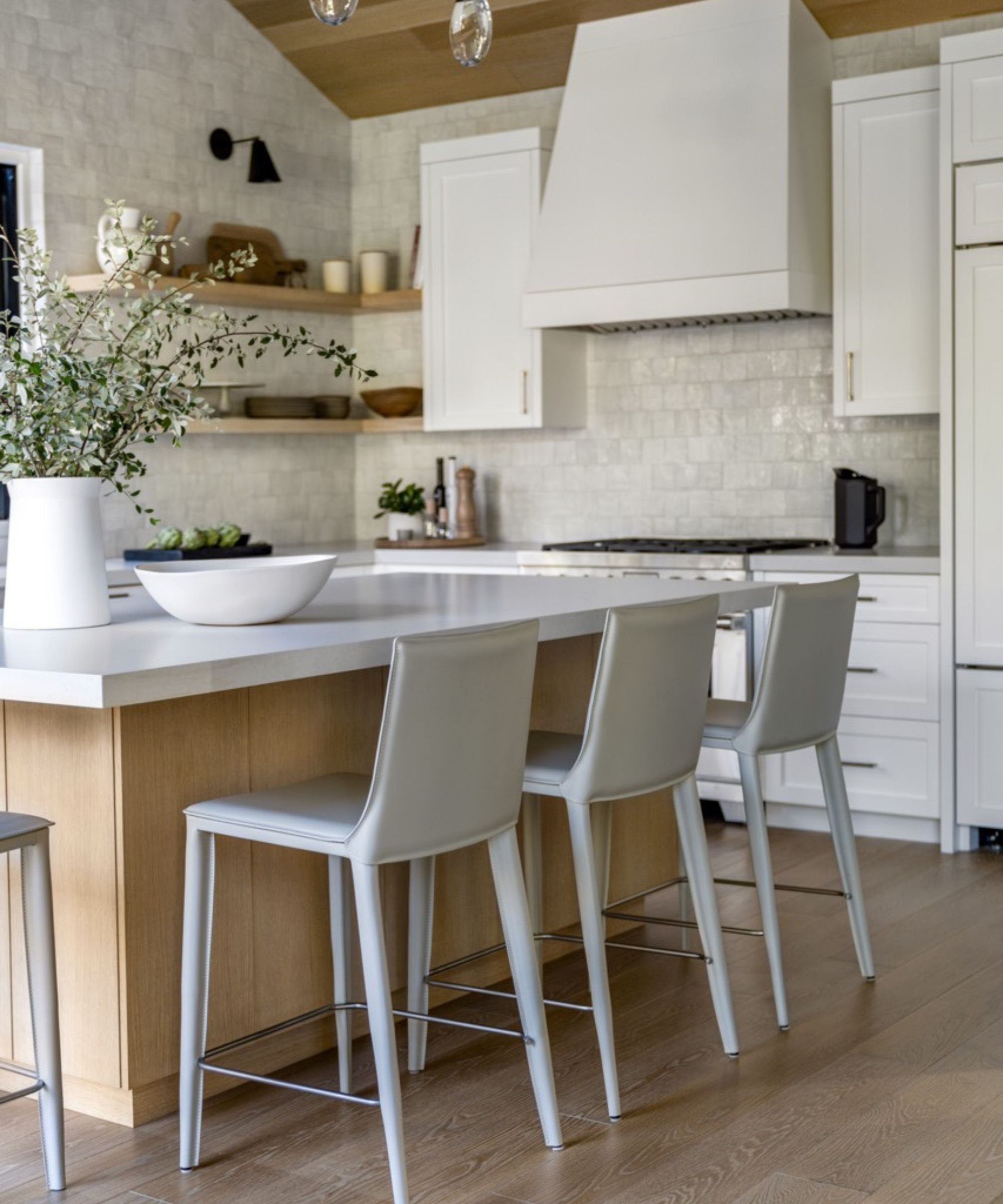
'To infuse your home with the Nancy Meyers aesthetic, aim for a blend of visual elegance and welcoming warmth, channeling the sophisticated yet lived-in look characteristic of her film sets. Begin with a palette of soft neutrals – whites, beiges, and soft grays – to set a classic, timeless base,' explains designer Kriste Michelini.
'Maximize natural light with large windows and French doors, and choose plush, comfortable furniture to encourage relaxation. Create open, functional spaces that foster social interaction, especially in the kitchen, which should serve as the heart of the home, equipped with quality appliances and stylishly displayed utensils.'
'And add personal touches through unique, story-telling items like vintage finds and family heirlooms, and layer textures to add depth. Accessorize with elegance, incorporating tasteful lamps, vases, and books, and add greenery and fresh flowers for a touch of nature. Extend this cozy aesthetic outdoors with inviting seating and ambient lighting, crafting spaces that are as welcoming as they are beautiful, embodying the luxury, comfort, and functionality that are hallmarks of a Nancy Meyers-inspired home,' adds Kriste.
2. Balance rustic style with a little luxury
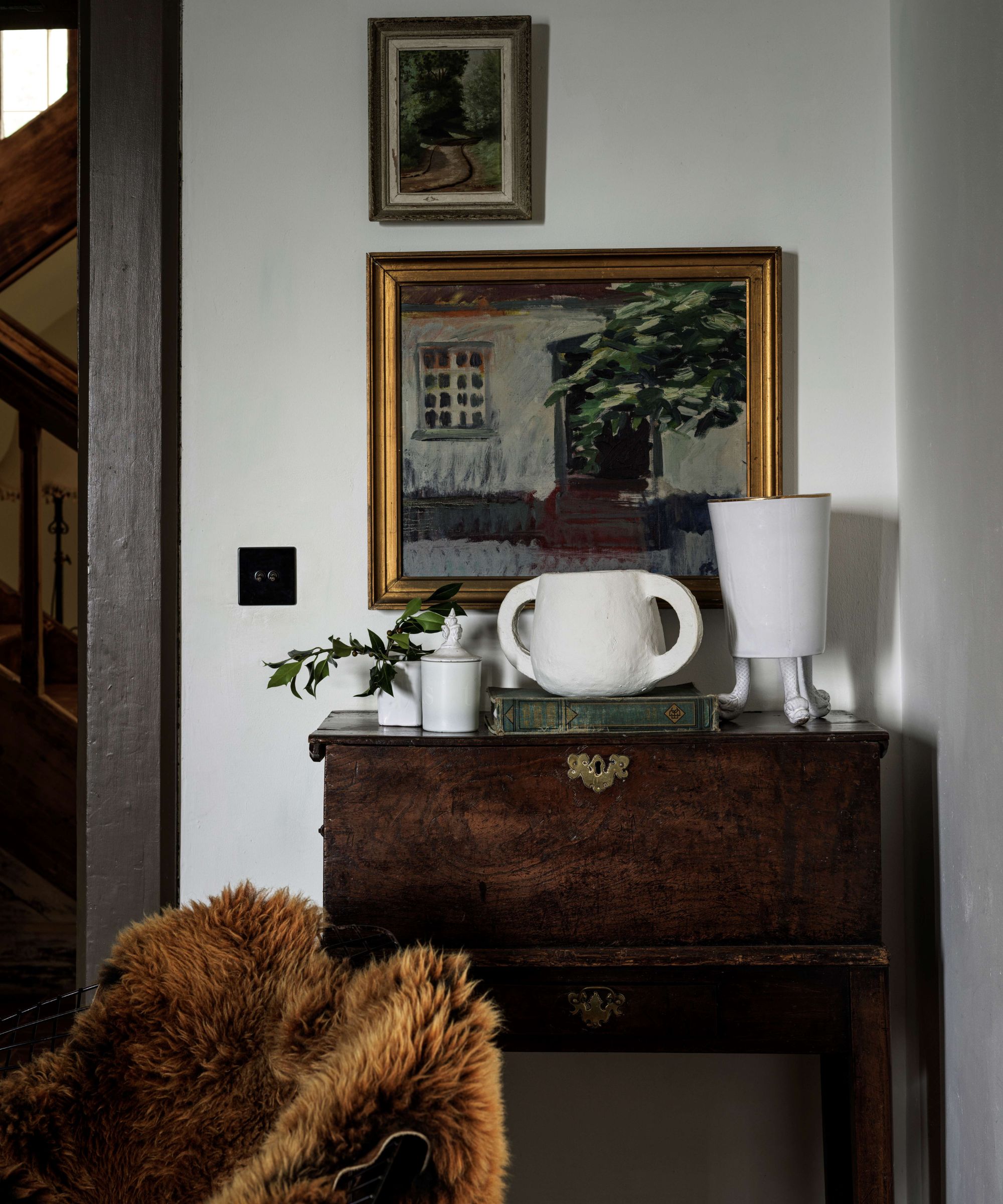
'If you're looking for a jumping off point to inspire a beach house style or modern farmhouse dream home, look no further than Nancy Meyers classics like 'Something's Gotta Give' and 'It's Complicated,'' says designer Kathy Kuo.
'Some may categorize the Nancy Meyers look as 'coastal grandma' but I really see it as taking coastal or rustic aesthetics to the next level in a way that is luxurious as well as lived in. The California casual trend is perhaps a better way to describe it. Replicate this look by mixing family heirlooms and knick-knacks with beautifully curated art and designer furniture – an example could be a designer dining table topped with a vintage tablecloth and an artisanal vase full of seasonal flowers just picked from the backyard.'
3. Mix new with old for a timeless transitional boho style
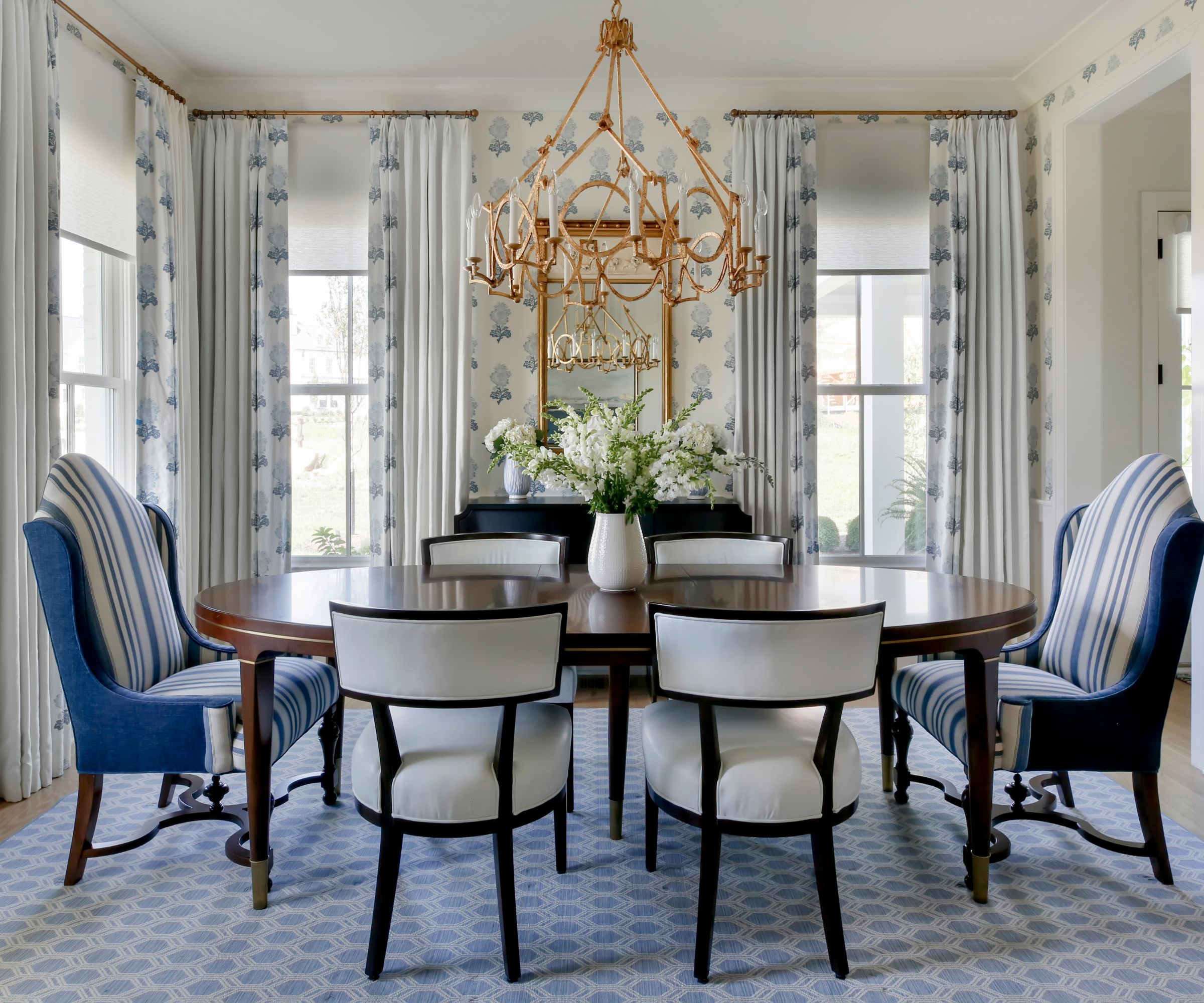
When I think of a Nancy Meyers film sets, it's the word effortless that first comes to mind. Nothing looks overly curated or styled, the homes in those movies really do just look like real homes with real people behind them. And out in the real world, those kinds of rooms are often created with transitional style – a mixing of many styles, old and new. As this dining room demonstrates.
'This room exudes comfort and warmth,' explains Connie Vernich founder of Vernich Interiors. 'Although it is a formal dining space, it feels comfortable enough to enjoy a book club meeting, family dinner or evening cocktail.'
'The mix of patterns and textures is monochromatic and calming. This room is filled with a mix of both modern furniture and family-inherited antiques. The mirror has been passed down through generations giving the room a curated feel. The draperies with its peek-a-boo fabric behind the linen shows a hint of the pattern seen in the wallpaper without being overwhelming to the room. By adding fresh flowers throughout the space, this room is the epitome of timeless classic beauty.'
4. Design a home that feels like you
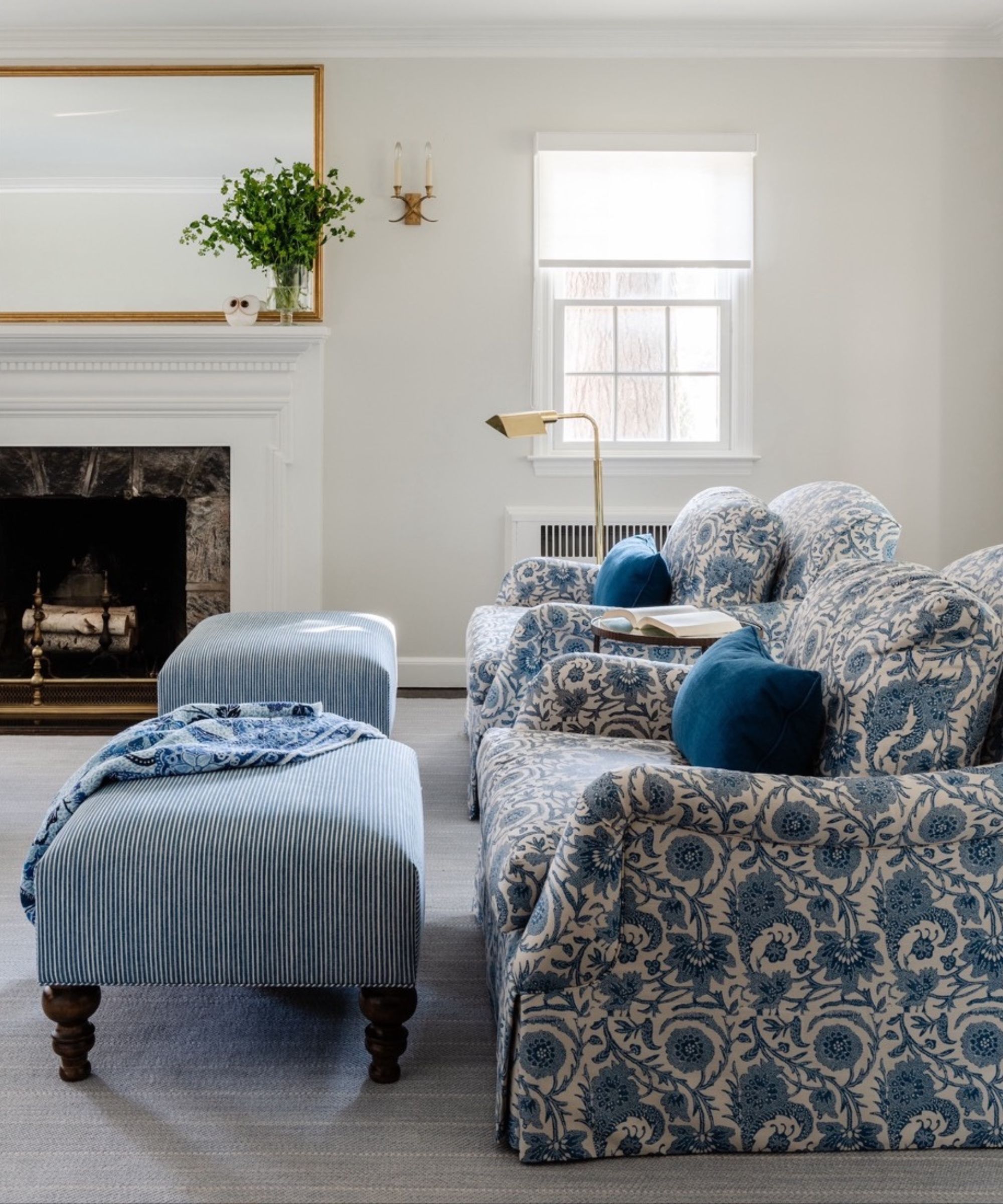
The easiest way to recreate Nancy Meyers' interiors? Design a home that feels like you. Don't lean too closely into trends unless you love them, and decorate with pieces that actually mean something to you. Hang prints and photographs, decorate with books, display family heirlooms, and fill rooms with personality and character.
As designer Jamie Toporovsky of JBT Design explains, 'The Nancy Meyers aesthetic is the feel of home the moment you walk into the space. It has charm and character, comfortable sitting spaces, and an all-American, classic Hamptons style, mixed with old-world European touches.'
5. Trust in classic color combinations
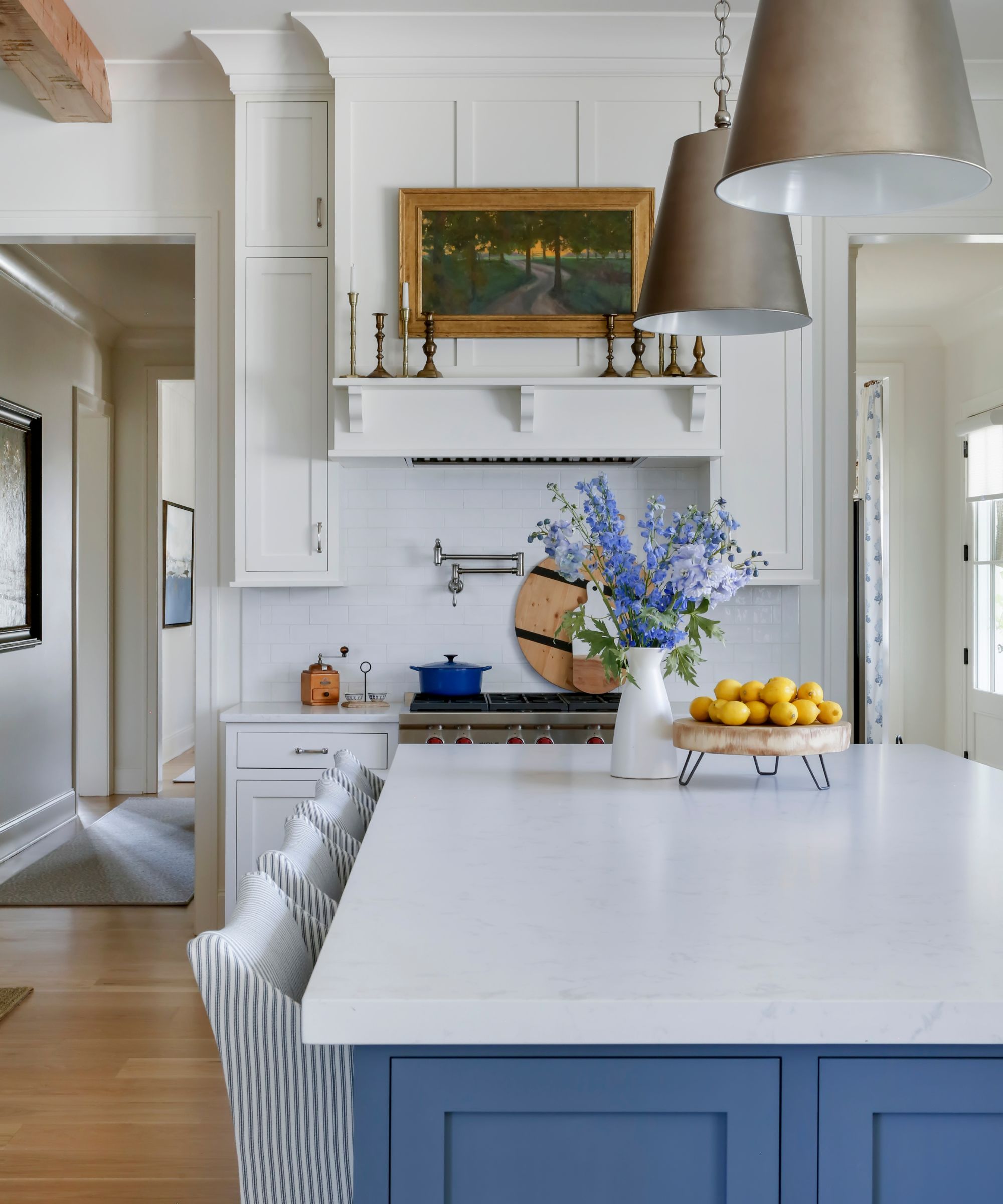
Classic, another way I would describe the Nancy Meyers aesthetic. So stick to the tried and tested, especially when it comes to color combinations. White and blue for example, it's seen a lot in her films and yes it always works, a total classic just like the movies.
'How timeless and inviting does this kitchen look?' asks Connie Vernich. 'Exuding warmth, light, and comfort. The white cabinetry is beautiful but the room needed the natural oak wooden hewn beams to pull the room together and give character to space. With its mix of vintage art, a brass candlestick collection and summer flowers you are drawn to this space and can almost smell the bread baking in the oven. We love how pretty the delft blue kitchen island looks in this bright room with bar stools that remind us of the fabric on a homey striped tea towel.'
6. Layer up textures for plenty of depth
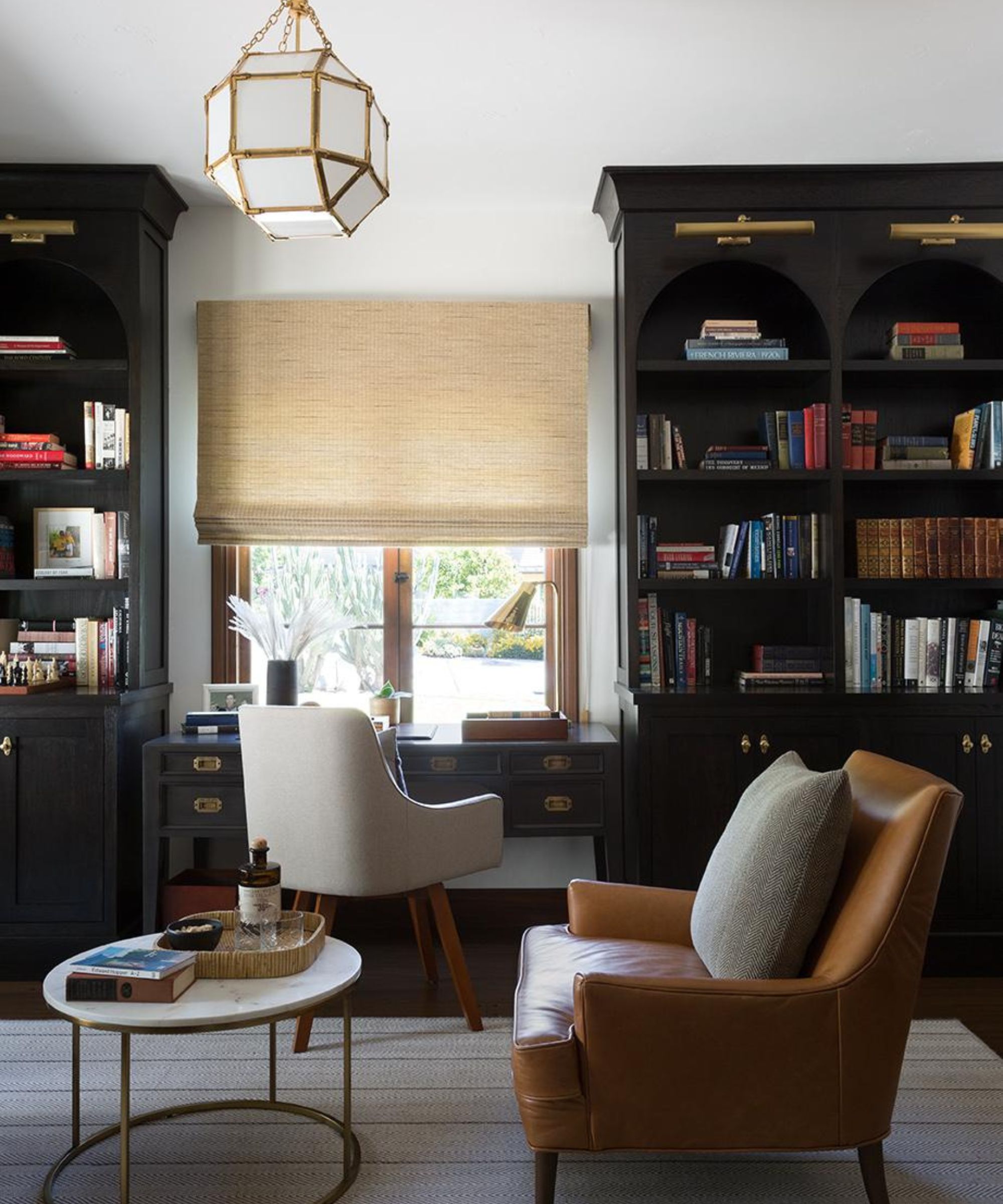
Texture and depth are key to many of the rooms you see in the Nancy Meyers films. They never feel flat or staged or in any way like a set, so recreate that vibe by layering up different fabrics, different finishes, and different shapes. Books are always great for this, and shelving provides the perfect space to create this character and texture in a room. But you can use soft furnishings too – throws, drapes, pillows, rugs, etc.
'Adorning rooms with a textural element, optimizing natural light, books askew, personal photos, and vintage piece of furniture. Creating fully realized comfort in rooms that at first glance are meant for function, like a kitchen or office space,' explains Stacy Chiavaro of Chiavaro Design.
7. Ground light colors with darker woods

As previously mentioned a few times, Nancy Meyers' interiors are often about the neutrals. But there's always a coziness to the spaces too, and that comes with using dark shades to ground all those light and airy shades. This very Nancy Meyers bedroom, designed by Connie Vernich, is the perfect example. The blue and white feel fresh and bright, but the darker woods create a needed contrast, adding a classic, timeless feel to the room.
'Dark woods and light fabrics give this room its stunning contrast and its comfortable and cozy feel. We love the vintage marble lamps that flank either side of the bed. Light linen draperies banded with delft blue velvet frame the windows and bring in the sophisticated mix of patterns on the bed,' explains Connie.
8. Blend touches of traditional

There's no denying that the rooms created in the Nancy Meyers film do err on the side of traditional. Traditional in a timeless way, not a stuffy way. I always notice how the homes in the films (much like the outfits and the styling) never date and that does come from using a lot of traditional, classic decor.
Again Connie talks of this style inspiration behind this guest bedroom which brings in a lot of plaid, yet doesn't feel too antiquated. 'Traditional design is exemplified in this guest room. Its grey-green walls are soothing and peaceful, Connie continues. 'The blue and green wool plaid and Ralph Lauren pillow fabrics are the perfect mix of texture and pattern. A comfortable leather chair sits in the corner by the window for a rainy afternoon of catching up on the latest book. Throughout the room are curated items and antique rugs. Unsurprisingly, guests say they never want to go home.'
Nancy Meyers interiors are essentially just about rooms that reflect the person within them. They are timeless, traditional without being old fashioned, curated without being overly so, and characterful without being cluttered. Of course, a lot of time and thought goes into the backdrops of the iconic films, but my advice would be to just not overthink it, decorate in a way you love.
Sign up to the Homes & Gardens newsletter
Design expertise in your inbox – from inspiring decorating ideas and beautiful celebrity homes to practical gardening advice and shopping round-ups.

I am the Head of Interiors at Homes & Gardens. I started off in the world of journalism in fashion and luxury travel and then landed my first interiors role at Real Homes and have been in the world of interior design ever since. Prior to my role at H&G I was the digital editor at Livingetc, from which I took a sabbatical to travel in my self-converted van (not as glamorous as decorating a home, but very satisfying). A year later, and with lots of technical DIY lessons learned I am back to writing and editing, sometimes even from the comfort of my home on wheels.
-
 Zooey Deschanel and Jonathan Scott's breakfast nook is an innovative, effective use of kitchen space – it turns a 'dead area' into a cafe-style corner
Zooey Deschanel and Jonathan Scott's breakfast nook is an innovative, effective use of kitchen space – it turns a 'dead area' into a cafe-style cornerJonathan and Zooey have situated an eccentric yet elegant dining area in what may have been an otherwise underused corner
By Hannah Ziegler Published
-
 6 things you should never throw in the trash – and what to do for safe disposal instead
6 things you should never throw in the trash – and what to do for safe disposal insteadFrom batteries to space heaters, experts reveal what not to throw
By Andy van Terheyden Published